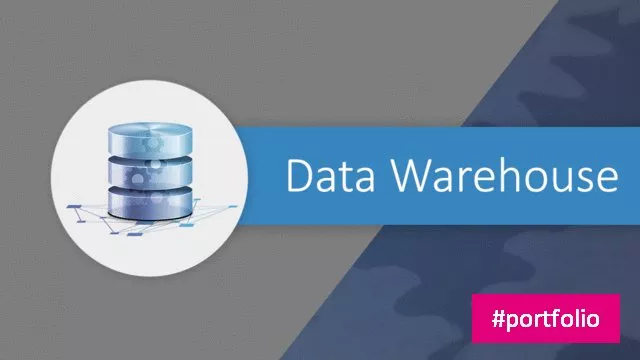"Realtime Customer Interaction is the key"
On January, 29th, the Customer Data Platform Institute (CDPI) and b.telligent will host a marketing workshop intensive, “Making the Most of Customer Data Platforms". In the interview he describes which marketers should take a closer look at the CDP's concept and what challenges Marketing Automation will face in the future.
Why was the CDP founded?
Customer Data Platforms developed because marketers found they did not a complete view of each customer and they needed one for many different purposes, including behavior analysis, predictive modeling, and personalization. Some of the vendors began as companies that built applications for those purposes and had to build a database to support those applications – as an automobile company might build roads so that people could buy their cars. Other vendors began as companies that collected data and distributed it for purposes such as tag management, and recognized they could expand the value of their products if they also kept a copy of the data in a database that could be shared with other systems. In both cases, the key insight was that the unified database had value apart from the applications that used it or distributed its contents. We first saw such systems in 2013; vendors at that time were responding to the great number of new Web and mobile data sources which had appeared since 2000.
Which marketers should listen up and take a closer look at CDP? What are the benefits?
CDPs are useful to any marketer with multiple, disconnected systems that collect customer data, whose customers expect to be recognized, to receive personalized treatment, and to be treated consistently over time and across channels. That is pretty much everyone, although it’s most relevant in industries where there are on-going customer relationships; where customers can be identified via account numbers, device IDs, or similar information; and where marketers can make decisions that will add value, such as offering the right products at the right time. Early adoption was concentrated in product selection for online and offline retail and in content recommendations for online media. We are now seeing much broader adoption in travel, hospitality, financial services, telecommunications, business marketing, healthcare, education, and elsewhere. The benefits are that having the data assembled and organized makes it easier to activate for purposes such as personalization, analysis, modeling, and recommendations. This saves time for analysts in preparing data sets and make the data available in real time for customer-facing systems.
What is interesting for you on the German market? Are there any German players that are interesting for you?
I am actually puzzled by the German market. It has just one CDP I know of, CrossEngage, which is a very impressive and mature product. But France, UK, and even The Netherlands have six CDPs each. Research shows that German consumers and German marketers have similar interests in personalization to the rest of Europe, so it’s not clear why there are so few German CDP companies. We do know that CDP companies from the U.S. and elsewhere are serving the market, and that there is great interest among systems integrators, consultants, and agencies. So I do expect more CDP activity in Germany in the future.
How do you see the topic CDP in connection with the big players in the marketing automation business, like Adobe or Salesforce?
Those vendors were slow to recognize the need for CDP. But they have certainly been hearing from their clients about the need for unified data and no doubt have seen some clients buy CDPs and connect them to their own systems. They are now starting to deploy solutions that address the problem although so far these are in early stages. Salesforce still has not offered a solution that meets the CDP definition of storing data in a separate database; they have built connectors that let different customer-facing systems such as call center and sales automation read each others’ data directly. We believe that a separate database is needed to track customer behavior over time and prepare analyses that can’t easily be done on data in operational systems such as call center and sales automation. Oracle and Adobe have announced solutions that do include a separate customer database but these are not yet fully available. So, for now, marketers with an urgent need still need to look at independent CDP systems.
DMP vs. CDP - How do the two fields separate from each other?
DMPs are designed to select audiences for advertising. This requires a design that structures and summarizes data so the selections can be run quickly. CDPs are designed to store all customer detail so users can access whatever they need for a particular purpose. This requires a much more flexible design accompanied by tools to extract information in the format needed for each use case. CDPs also focus primarily on first-party data with personal identifiers while DMPs often incorporate third party anonymous data since that is used for advertising. But many DMPs have added abilities to handle first party, identified data, so this is a less important distinction than it once was. But it’s still important to look at the details of what is provided: for example, DMPs have very little ability to determine which identifiers (postal address, email address, device ID, etc.) relate to the same individual.
What are the biggest challenges for marketing automation in the future?
The biggest challenge will be to handle the growing volume and complexity of customer data, in ways that deliver value while respecting customer preferences for privacy and control over their information. The number of systems that marketers use to interact with their customers continues to increase and each system must be connected to the others so that data can flow back and forth. But more important than the connections will be the analytical capabilities to identify opportunities for engagement and to find the appropriate response in each situation. The number and subtlety of these is so great that I expect increasing use of artificial intelligence to be essential to handling them effectively. This all poses a great challenge to marketing automation because current marketing automation systems were designed in an era when batch emails were the main activity. They have evolved to some degree but the future requires something very different that is built to handle individual, real time interactions.
Customer Data Platform Institute Europe
The Customer Data Platform Institute Europe educates marketers and technologists about customer data management. Activities include publications about CDP best practices, vendors, and industry news; conference presentations, workshops, and consulting. The Institute supports European CDP users directly and through a network of partners who are CDP experts.











